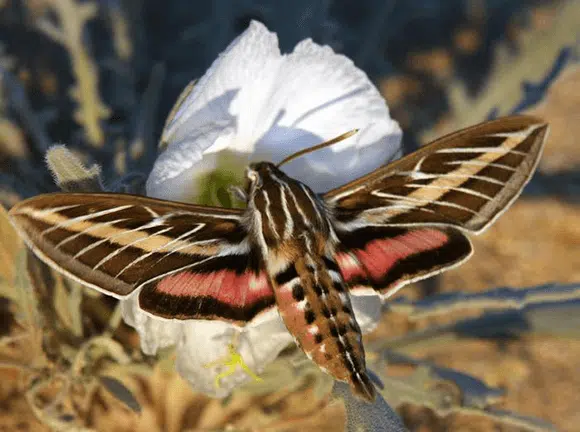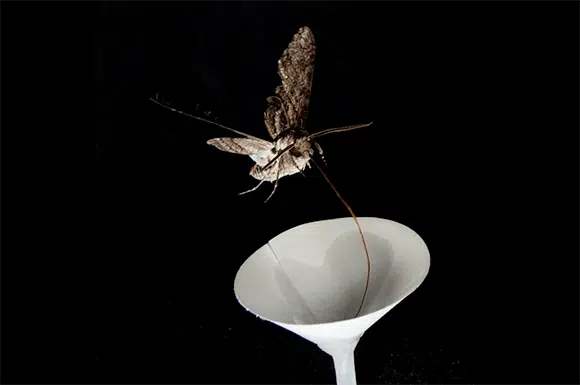Polluting substances break down the compounds in the fragrance of flowers, and may harm the pollination of agricultural crops and wild plants around the world
By Roni Zoller, Davidson Institute for Science Education website

The extensive human activity in the last hundred years has led to a large increase in the level of air pollution. This aggravation of the air pollution harms the earth and its people, the human beings: the greenhouse gases in the atmosphere cause to global warming, and the pollutants increase the risk of a variety of diseases, sometimes fatal, and therefore cause an increase in premature mortality. It is known that air pollution also harms animals, but we still do not know how it affects their sense of smell.
A recently published study Discovers that air pollution impairs the ability of insects to detect the smell of flowers and be attracted to them. This damage may disrupt the process the pollination, the essential for plant propagation. Disruption of pollination may lead to a decrease in agricultural crops and damage to entire ecosystems.

Air pollution impairs the ability of insects to detect the smell of flowers, to be attracted to them and to pollinate them. A species of night moth Hyles lineata flower pollinator | Ron Wolf/University of Washington
The secrets of the flower perfume
The researchers, from the University of Washington in the United States, conducted their research on the plant Oenothera pallida, which belongs to the nightshade family and blooms, as its name suggests, at night. Various insects, including butterflies, flies and bees, are attracted to the flower during the day, and night insects - during the dark. First, the researchers checked which insects are necessary for the flower's pollination process, and discovered that night moths from the Hawkmoths family are its main pollinators.
A mixture of different molecules is responsible for the fragrance of the flowers, the combination of which creates a unique smell for each flower. To identify all the ingredients that make up the smell of flowers Oenothera pallida, the researchers wrapped the flowers in plastic bags, collected a sample of the smell of the flowers and analyzed the products in the laboratory. In this way, they were able to identify 22 different odor molecules. In the next step, the researchers checked which of these molecules are detected by the night moth's tentacles, and discovered that 12 of them cause the moth to be attracted to the flower, and that most of them are molecules called monoterpenes. Now the researchers could create the smell of the flower by synthesis in the laboratory.

Pollutants against perfume
To examine the effect of air pollution on the smell of flowers, the researchers exposed the molecules that create the smell of the flower to ozone (O3) and to the radicals of nitrate (NO3), two types of common polluting substances that are created in the process of burning fuels, in their known concentration in nature today. The researchers found that the presence of ozone led to the breakdown of about 30 percent of the monoterpene molecules that create the smell of the flower and are recognized by the moth. NO radicals3 Caused the breakdown of up to 84 percent of these molecules, that is, in the presence of this substance the odor molecules almost completely disappeared.
To what extent does the reduction in the amounts of fragrances affect the ability of the moths to detect the scent of the flower? To answer this question, the researchers performed various experiments in the laboratory and in the field. In the laboratory, the researchers created a special box on one side of which entered the mixture of substances responsible for the smell of the flower and on the other side the moths could enter the box. The researchers followed the flight path of the moths that entered the box and checked if they were attracted to the smell coming from the other side of it. When the researchers added nitrate radicals, which cause the breakdown of monoterpenes, to the mixture of aromatic substances, they saw that the moths were unable to detect the odor and did not reach the source of the odor. The detection rate of the source of the smell by night moths of the tobacco flutter species decreased by 50 percent, while night moths of the type Hyles They did not identify the source of the smell at all. In contrast, the addition of ozone to the scent of the flowers had no effect at all on the moths' ability to identify the source of the scent.
The researchers performed the same experiments in the field. They placed artificial flowers in the field, half of which contained the mixture of aromatic substances that create the smell of the natural flowers and half of which contained the same mixture, but after treatment with nitrate radicals. The results of these experiments matched the results of the laboratory experiments, showing that the mixture treated with the pollutant attracted 70 percent fewer moths compared to the mixture not treated with the pollutant.

Pollution - a danger to natural communication
Communication through smells and different chemicals is very common in the animal world, among other things in the relationship between predator and prey, in choosing mates and between animals and the plants that they use as a place of residence. This new study shows how air pollution created by us, humans, affects the ability of moths to recognize flowers and therefore - their ability to pollinate them. On the reasonable assumption that these or similar pollutants affect smells in nature in a similar way, the air pollution we create may lead to fatal damage both to the agricultural crops we feed on and to the biological diversity in nature around the world.
More of the topic in Hayadan:

One response
What fun, let's continue to exterminate ourselves for money. . The world will settle down and recover beautifully after it disappeared due to a lack of food, water and air